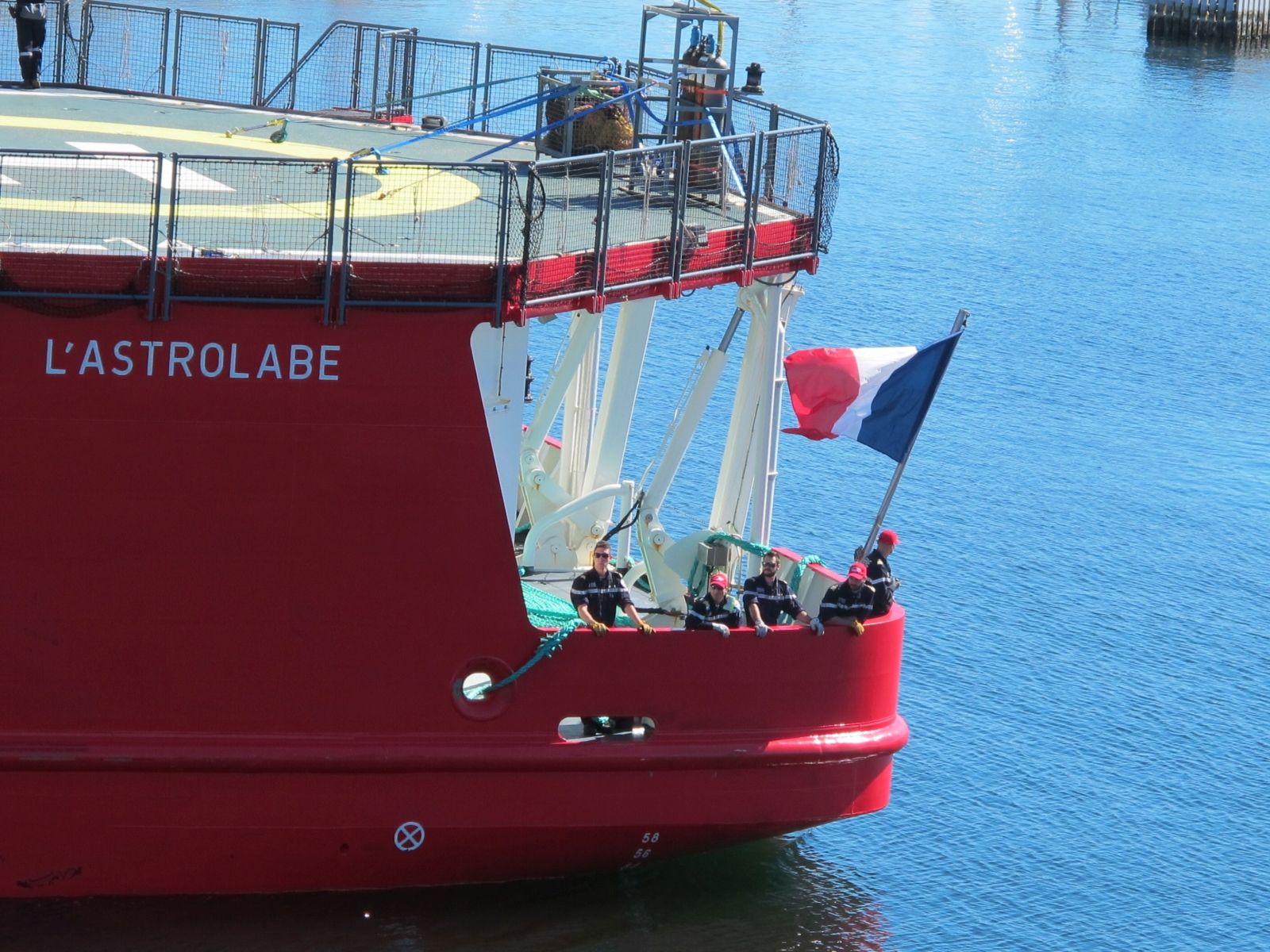What does Hobart offer as a Gateway City?
Infrastructure
Hobart Port
The deep-water estuary and southern location of Hobart make it the perfect gateway city to access Antarctica. Hobart Port has a dedicated Antarctic and cruise terminal at Macquarie No. 2 Wharf, which also houses the world class Cargo and Biosecurity Centre of the Australian Antarctic Division (AAD). Further infrastructure and Antarctic logistics investment are planned for Macquarie Point, with facilities that will support the year-round lay-up for the next generation of Antarctic resupply and research vessels, further increasing the Antarctic and Southern Ocean sector economic contribution to Tasmania. Australia's new and world leading icebreaker, the RSV Nuyina is home-ported in Hobart.
Hobart Airport
The Hobart Airport assists Antarctic operations through transporting personnel and equipment for a range of national programs operating in Antarctica. It is currently home for the AAD A319 Airbus intercontinental Antarctic air link service, which operates regularly from Hobart to Australia's Wilkins aerodrome, and the United States McMurdo runways. RAAF C-17 flights also travel between Hobart and Wilkins each season to deliver heavy lift cargo for the AAD.
Antarctic science and research
The extent of scientific expertise gathered in one place, and the level of private-public research collaboration within Tasmania is unique and strengthens Tasmania's reputation as being a centre of excellence in cold-climate science and research.
The headquarters for the Australian Antarctic Division (AAD) is located in Kingston which coordinates the national research efforts for the Australian Antarctic program.
On Hobart's waterfront situated in purpose-built facilities are the marine laboratories of the Commonwealth Scientific and Industrial Research Organisation (CSIRO) and the University of Tasmania's Institute for Marine and Antarctic Studies (IMAS).
Co-located with IMAS is the international program office for the Southern Ocean Observing System (SOOS) and the national project office for the Integrated Marine Observing System (IMOS).
The Antarctic office for the Bureau of Meteorology (BoM) is also located in Hobart.
Education
The presence of AAD in Kingston and colocation of IMAS (UTAS) and the CSIRO on Hobart's waterfront is a unique educational offering for tertiary students engaging in Antarctic and Southern Ocean Studies.
In 2019 -2020 52 PhD students were researching in Antarctic and Southern Ocean topics with the University of Tasmania. Over 150 post graduate students are enrolled in courses at IMAS.
Significant Antarctic sector conferences generated 4114 delegate/days, yielding an estimated $3.5 million in spending by conference delegates in 2019 – 20. This yield was half that of 2017-18 due to COVID-19 restrictions.
Goods and services
Members of the Tasmanian Polar Network are experts in providing a comprehensive range of goods and services tailored to an array of Antarctic programs requirements between Hobart and respective program bases in Antarctica. Collaborations between program leaders and specialist engineering enterprises in Tasmania have led to innovations that are well adapted to Antarctica's extreme conditions. At Hobart Port, expeditioners, food, fuel and traverse systems are loaded into the icebreakers and research vessels that voyage to Antarctica.
